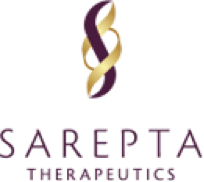
Yet again we’ve had a big middle of the week in the biotechnology space. Companies have moved on a variety of inputs and we’ve got plenty to go at today as far as putting forward some thoughts why things are moving and what comes next is concerned.
Here’s a look at one of the weeks biggest movers – Sarepta Therapeutics Inc (NASDAQ:SRPT).
This one is rooted in the sales of drug that has attracted a fair amount of headlines over the last couple of years – Exondys 51, or eteplirsen. The drug is targeting a condition called Duchenne muscular dystrophy (DMD), which, for those not familiar with the disease, it is a severe type of muscular dystrophy. It causes muscle weakness and degeneration and it usually starts to present itself in young boys, generally around the age of four years old. It’s rooted in something called dystrophin, which is a protein that helps keep muscle cells intact. DMD sufferers are unable to produce dystrophin, or are unable to produce effective dystrophin, because of a defect in the gene that codes for the protein.
So, with eteplirsen, Sarepta showed that it could basically fix this defect (at least to a degree) and, in doing so, can help to replace the dystrophin that the patient is missing.
The FDA approved the drug back in September 2016 after what proved to be a drawn out and controversial development program. The drug was shown to work across a variety of mid to late stage trials and was proven safe in the patient population (which is especially important in the pediatric end of the scale). The scale of the clinical benefit, however, was always in question. It only brought about a very limited degree of improvement in patient and the company was pitching for a very high price (around $300,000 a year) Couple this with the fact that there’s no highly effective therapy for this condition (really, there are no options other than eteplirsen) so the whole situation threw up a big ethical question – should the FDA approve the drug based on very limited efficacy so as to give this patient population an option that they desperately need, or should the agency turn it down because it’s not that effective and it doesn’t bring about too high a degree of clinical benefit.
Those who remember the situation will remember the big advisory panel meeting that preceded the FDA’s decision. For those that don’t, a large number of DMD patients and their parents turned up to make statements as to why they needed the drug and to essentially lobby the FDA for approval.
It was a bit controversial, but whatever the opinions of outsiders to the matter, it worked. The FDA approved the drug and it hit shelves at the preset price. Many patients pick up discounts, meaning not all DMD sufferers have to meet the high end of the payment, but there’s still a portion that do.
Which brings us to the recent news.
Sarepta just put out earnings and this is the first report from which markets have had a full quarter worth of sales data on the drug (that is, once commercialization was at full scale). As such, analysts were looking at this one closely to get an idea of whether the drug can take off despite its high price and relatively limited efficacy profile.
The result? The numbers suggest it’s a very strong program for the company.
Sales of the drug during the second quarter of this year came in at $35 million, above market estimates of around $22 million. Guidance was also raised for 2017 to between $125 million and $130 million, above the previous consensus of $105 million.
Sarepta is up 14% during after hours trading on the back of the news and will likely continue to gain strength as play commences during the session today and standard market participants get a chance to respond to the results.
Expectations are that these revenues will continue to increase for Sarepta as the drug gains traction in the DMD space and picks up a higher degree of coverage from the major insurers that control the US healthcare system. Peak sales estimates vary from $500 million to $1 billion.




